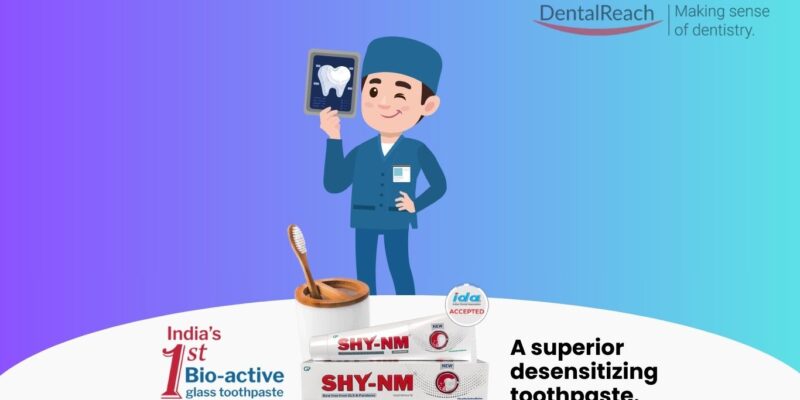In India, the Dentists Act and Code of Ethics Regulations obligate dentists to “devote [their] life… to the cause of serving humanity” and forbid letting caste, religion or social status influence patient care [1]. Internationally, professional codes like the American Dental Association’s emphasize the same values [2]. In practice, however, these ideals can conflict. Below we examine four common scenarios – overtreatment, patient refusal, pediatric consent, and social discrimination – and how Indian dentists can apply ethical principles (and Indian regulations) to resolve them.
Beneficence, Autonomy and Justice in Dentistry
Patient autonomy, beneficence, and justice are foundational tenets of ethics in dentistry.
- Beneficence means acting in the patient’s best interest – planning treatment to maximize benefit and minimize harm[3]. For example, avoiding needless drilling or extractions upholds beneficence.
- Autonomy means respecting a well-informed patient’s right to decide. Dentists must provide honest information and allow patients to accept or refuse treatment plans[4][5]. (This includes minors: by Indian law only parents/guardians can consent for anyone under 18[6], though dentists should involve children as appropriate.)
- Justice means treating all patients fairly, without prejudice. A dentist must provide the same quality of care to every patient, regardless of caste, class or background[1][7]. Injustice in dentistry occurs if a patient is denied a needed treatment “without good reason” or burdened unfairly[8][9].
Case Scenario 1: Overtreatment for Financial Gain
Dilemma: A patient is recommended multiple high-cost cosmetic procedures (e.g. veneers, crowns) that seem unnecessary. The dentist knows these may not be needed but is pressured by clinic profits.
-
- Principles Involved: Beneficence and non-maleficence (avoid harm) require only doing treatments that truly benefit the patient. Justice requires treating the patient fairly, not exploiting them for money. Autonomy also matters: a patient trusting the dentist expects honest advice, not hidden sales pitches.
- Analysis: Overtreatment (unnecessary procedures) violates the dentist’s duty of care. Indian experts criticize extreme “smile-makeovers” done for marketing, asking whether they do justice to patients by subjecting them to needless interventions[10]. The DCI Code of Ethics says the patient’s welfare “should be conserved to the utmost of [the] practitioner’s ability,” not the dentist’s wallet[1]. The IDA Code similarly requires treatment plans “according to an approved and accepted plan” and full disclosure of fees. The ADA Code and ADA guidance also forbid unnecessary services as unethical (see ADA Advisory Opinion: Unnecessary Services[2]).
- Resolution: The dentist should re-evaluate the treatment plan with a strictly clinical lens. Useful steps include:
- Verify Necessity: Ensure each proposed procedure is genuinely indicated. If any treatment is marginal, consider conservative alternatives or “watchful waiting.”
- Full Disclosure: Explain all options honestly (including no treatment) with risks, benefits and costs, so the patient can make an informed choice[11]. For example, offer a simple filling instead of multiple crowns if appropriate. Cost estimates should be itemized as per IDA guidelines.
- Second Opinion: Encourage the patient to seek a colleague’s opinion if they are unsure. This upholds professionalism and patient confidence.
- Respect Beneficence: If a treatment is truly unnecessary, the dentist should refuse to provide it. Unjustified procedures should be avoided even if refused by the patient later; the dentist can ethically withdraw the offer and document the plan. In other words, the dentist refuses to do wrong, not the patient.
By prioritizing the patient’s needs over profit, the dentist upholds beneficence and justice. Transparent communication and documentation protect both patient and practitioner. In sum, dentists should “do no harm” – which includes avoiding financial exploitation[3][1].
Case Scenario 2: Patient Refuses Recommended Treatment
Dilemma: A patient declines a dentist’s recommended root canal (suggesting extraction instead) due to cost and fear. The dentist believes the root canal would save the tooth.
-
- Principles Involved: Autonomy vs. Beneficence. The patient has the right to refuse any treatment (autonomy), but the dentist’s duty is to act in the patient’s best interest (beneficence). This can be an ethical quandary.
- Analysis: Indian law and codes uphold patient autonomy. The IDA Code stresses that “the patient has the right to choose, on the basis of adequate information, from alternative treatment plans”[4]. Dentists must respect a well-informed refusal. Ethically, the dentist’s role is to ensure refusal is truly informed: that the patient understands the likely consequences of no root canal (e.g. infection or later extraction). The DCI guidelines require obtaining informed consent before starting, which implies explaining consequences if treatment is not taken[11]. The ADA MouthHealthy ethics guide similarly affirms that a dentist will “respect a patient’s wants and needs,” involving them in decisions as long as those wishes fall within accepted care[12].
- Resolution: The dentist should counsel and document, but ultimately respect the decision. Recommended steps:
- Ensure Understanding: Gently explain the root canal and extraction options again, including long-term outcomes for each. Use clear, empathetic language and written materials if helpful.
- Explore Concerns: Ask why the patient refuses. Is it fear of pain, cost, or misinformation? Address each issue (e.g. explain sedation options, discuss payment plans).
- Offer Alternatives: If patient still won’t agree to root canal, discuss feasible alternatives or smaller steps (e.g. medication for pain, a more affordable treatment) that safeguard health.
- Document Thoroughly: Record in the patient’s chart that refusal was explained and signed off (if possible, have the patient sign a refusal form). This fulfills ethical and legal obligations, as “treatment can be terminated on the wishes of the patient”[13].
- Professional Limits: Remember that a dentist cannot physically force treatment. If the patient insists on extraction, the dentist may comply or refer the patient elsewhere – either action is ethically acceptable if done without pressure. If refusing to treat at all (for any reason), IDA rules say it cannot be for discriminatory reasons and the dentist must still manage the patient in the interim[13].
In short, after honest dialogue the dentist must honor the patient’s autonomy. The trust built by respecting a patient’s informed choices often preserves the relationship. (The patient may seek care again later or agree to follow-up after some reflection.) Key point: Fully informed refusal, followed by respectful acceptance, is ethical practice.
Case Scenario 3: Informed Consent in Pediatric Dental Care
Dilemma: A 10-year-old child needs multiple decayed teeth treated. The parents sign consent for restorations and extractions, but the anxious child is refusing (crying and hiding). The dentist can treat only under nitrous oxide sedation, but the child resists the mask.
-
- Principles Involved: Beneficence (child’s health) vs. Autonomy of guardian and assent of child. Parents/guardians have the legal right to consent, but the child’s comfort and emerging autonomy must also be respected.
- Analysis: Legally in India, minors cannot give binding consent; a parent or guardian must sign for anyone under 18[6]. A recent global review notes that many countries, including India, set age as the criterion for competence[14].) Hence the parents’ written consent is mandatory. Ethically, however, dentists should still involve the child as much as possible. The APA states that dentists must inform parents and guardians fully about proposed care, and likewise, older children should be given age-appropriate explanations.
- Resolution: The dentist should communicate and plan carefully:
- Calm Explanation: Use child-friendly words to explain what will happen. Show the nitrous mask and let the child hold it first so it seems less scary.
- Parental Involvement: Encourage a parent to hold the child’s hand or speak soothingly during procedures. Ensure parents understand risks/benefits of sedation vs. alternative strategies (like behavior management or staged treatment).
- Behavior Guidance: Employ gentle behavior management techniques (praise, rewards, distraction) as per pediatric dentistry standards. For example, some dentists keep parents in view to reassure the child[15].
- Consent Scope: Make sure the written consent covers the sedation plan. The IDA pediatric consent form explicitly requires written consent for any treatment on a minor[15].
- Resolving Conflicts: If the child adamantly resists treatment despite sedation attempts, the dentist may postpone and try another approach later. If parents are unwilling to allow effective treatment (for instance, refusing necessary anesthesia), the dentist must weigh the child’s best interest. In extreme cases (e.g. a life-threatening tooth infection), there are ethical arguments to act in “the best interest” of the patient, potentially seeking legal advice. However, such cases are rare in general dentistry.
In all cases, prioritize the child’s well-being. Act with beneficence by providing safe, comfortable care, but also respect the parents’ role in decision-making. Clear documentation of parental consent and child assent (where possible) is essential. Ultimately, the dentist must ensure the child receives needed care without unduly traumatizing them.
Case Scenario 4: Discrimination by Socioeconomic Class or Caste
Dilemma: A dentist is offered a complex case for a low-income patient from a disadvantaged caste. The dentist feels uncomfortable and considers referring the case to someone “less busy,” or charging the patient more than a wealthier client.
-
- Principles Involved: Justice and Equity are paramount. Fairness dictates that all patients deserve the same quality of care and respect, regardless of income, caste or social status. Beneficence also requires treating every patient’s health as equally important.
- Analysis: Indian ethics codes explicitly forbid discrimination. The IDA Code’s “Fairness” principle declares that a dentist “shall not exclude” any person based on caste, creed, or social standing[16]. DCI rules reiterate that caste or social considerations “must not intervene” in duty to patients[1]. Even the ADA instructs dentists to “provide dental care without prejudice” and treat “everyone fairly, regardless of race, creed, religion, [or] socioeconomic background”[7]. Denying or denigrating a patient for being poor or from a certain community is unethical and can undermine public trust in the profession.
- Resolution: The dentist should self-examine biases and provide equitable care:
- Equal Treatment: Treat the patient as any other – offer the same level of explanation, options, and skill. If specialized treatment (e.g. implants) is indicated but unaffordable, explain all affordable alternatives (like metal bridges, removable dentures or referrals to government clinics).
- Cost Sensitivity: Work out a payment plan or inform about insurance/government schemes. Ethically, it is acceptable to adjust fees based on ability (sliding scale) as long as quality of care is not compromised, though this must be done transparently.
- Cultural Respect: Be mindful of cultural differences. Show respect (e.g. address any cultural dress customs) and avoid assumptions. Communication should be patient and respectful.
- Seek Personal Help if Needed: If the dentist is personally uncomfortable (for example, a dentist with bias), one should strive to overcome that bias through cultural competency through training or mentorship. If truly unable to provide care, the dentist should refer the patient to another qualified dentist without disparagement and ensure continuity of essential care.
Refusing treatment on the basis of caste or class not only breaches ethics but may violate broader human rights principles (Article 15 of India’s Constitution prohibits caste discrimination in public life). In practice, maintaining justice means advocating for all patients’ oral health: a dentist in public service has a special duty to serve the underserved[1][7].
Conclusion
Ethical dilemmas in dentistry test our commitment to professional values. In India today, dentists must navigate conflicts between ethical principles and practical pressures. The Dentists (Code of Ethics) Regulations and DCI guidelines provide clear direction: always keep patient welfare first and treat every patient without bias[1].
When facing a dilemma, dentists should remember these core principles and act in accordance with both the letter and spirit of the law. Practical steps – like thorough informed-consent discussions, second opinions, and fair fee practices – help resolve conflicts while protecting patient rights and dentist integrity. Regular ethics training, peer discussion, and knowledge of legal guidelines (e.g. consumer-protection laws, consent law) are crucial.
References
[1] [3] [5] [6] [8] [9] 16. Ethics-in-Dentistry.pdf file://file-KhXCHhErhpqSk2bjpf6im5
[2] ADA.org: 2023 Principles of Ethics and Code of Conduct
[4] [13] [16] Indian Dental Association
https://www.ida.org.in/AboutUs/Details/Code-of-Ethics
[7] [12] Ethics and Dentistry | MouthHealthy – Oral Health Information from the ADA
https://www.mouthhealthy.org/all-topics-a-z/ethics-and-dentistry
[10] [11] The Top 10 Ethical Challenges in Dental Practice in Indian Scenario: Dentist Perspective – PMC
https://pmc.ncbi.nlm.nih.gov/articles/PMC5863419/
[14] A pilot study on the global practice of informed consent in paediatric dentistry – PubMed
https://pubmed.ncbi.nlm.nih.gov/38496332/
[15] Indian Dental Association
https://www.ida.org.in/Membership/Details/PaediatricDentistry




















Comments